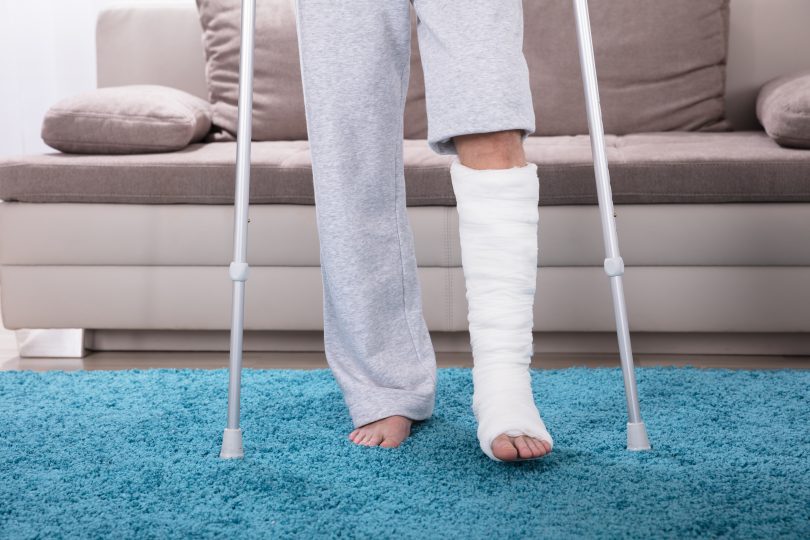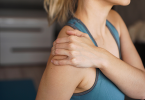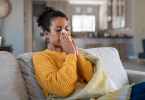We all like to think of our homes as a safe place, but unfortunately, injuries happen all the time. Each year in the U.S. there are as many as 7 million injuries and 20 million hospital trips caused by injuries that occur inside the home.
The most common household injuries, as many of us have undoubtedly experienced some of before, include: trips, bruises, falling objects, sprains, falls and broken bones.
Falls
Slipping, tripping, falling and injury from falling objects are among the top common home injuries. Many times, these are extremely minor and we don’t even think twice about them. When was the last time you tripped at home? Probably pretty recent. However, 20% of falls result in a bone fracture. Others might result in sprains, jammed joints, dislocation, or broken bones.
Sprains
Sprains are a stretch and/or tear of a ligament. Most commonly, sprains occur in the ankles, but you can sprain your wrist, foot, or any other ligament in your body. Usually, sprains can cause pain, swelling, bruising, and inflammation.
How do we know it’s sprained?
- If you heard a pop when you hurt it
- If the pain is mostly in the soft part of the ankle
- Numbness or tingling
To treat a sprain, you should rest the injured limb. Try not to put any weight on the affected area and ice the wound. Next, you should compress the area with an elastic wrap or bandage and elevate the limb above your heart to prevent swelling. If the swelling does not go down, and the pain doesn’t stop, see a doctor.
Jammed joints
Jammed joints cause difficulty moving the joint, mild pain, stiffness, swelling and redness. A jammed finger is generally a sprained finger. Toes and fingers can become jammed very easily. If you jam something, you should try to avoid using it until the pain goes away and ice if swollen for about 15 minutes.
Stubbed toe
Do you cringe just thinking about it? Usually, a stubbed toe is a painful experience that passes quickly. However, it is possible to stub your toe so hard it causes a bone fracture or cracks the nail. Swelling, discoloration, immobility and visible disfiguration should not go ignored, see a doctor.
Dislocation
Dislocation is an injury where the bone pops out of the joint. Shoulders are very susceptible to dislocation, however, it can occur in any joints- including knees and fingers. Dislocating a bone will result in swelling, bruising, deformity, intense pain, and inability to move the joint. If a bone seems dislocated, see a doctor immediately!
Broken bones
Broken bones are different from the previous injuries we’ve listed and much more severe. If the injured area becomes swollen, numb, and tingly, it is most likely broken. Try to locate the exact area of pain- if it’s directly over bone, it may be a break or crack. The pain is usually very strong and you may hear a crack during the injury. Unbearable pain is a typical symptom of a broken bone and you should see a doctor.
If the pain is bad but not unbearable, this may be a bone bruise- which is an injury on the surface of the bone, most commonly occurring on shins and heels. If you do have a bruised bone, you should see a doctor if the swelling does not go down and the pain continually increases.
First aid and pain management can vary from injury to injury, so use your best judgment. While this list includes basic first aid recommendations, it should not be taken as a diagnosis of injury or treatment.
“If you’re concerned about fracture or tear, you should see your physician to better determine the nature of your injury and the appropriate treatment,” says Dr. James Crownover, Physical Medicine and Rehabilitation and Sports Medicine physician at Augusta University Orthopaedics.
Injury prevention
Though some injuries are inevitable, there are some small things we can do that will have a huge impact on home safety.
Are you accident prone? Maybe it’s the hazards in your home. The best way to lower the risk of household injuries is to take the steps toward prevention. Try these simple tactics to make your home safer:
- Throw rugs, though they are cute, are a big trip spot for all of us, especially children and older people. Taping or tacking down the corners and edges of all the rugs in your home.
- Leave a light on at night. Place night lights in key areas of your home: the kitchen, bathroom and hallways. This will help you navigate any late night, half asleep trips down the hall and prevent stubbed toes. (DYK? The pinky toe is the most commonly injured toe.)
- Bathrooms are huge places of injury! Wet floors lead us down a slippery slope towards slips and falls. Make the bathroom a no-slip zone with simple additions such as non-slip mats and handrails.
- Two really easy and cheap ways to help prevent stair injuries are good lighting and keeping the stairs clutter-free. We all like to pile up a stack of things that need to be taken upstairs, but too many times this stack becomes our demise.





